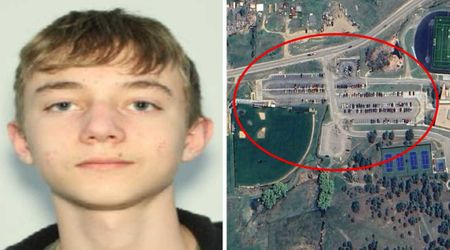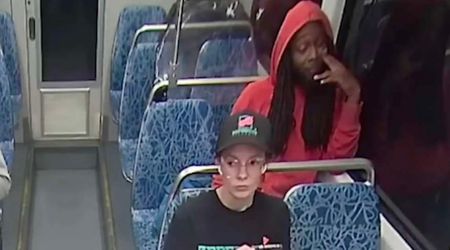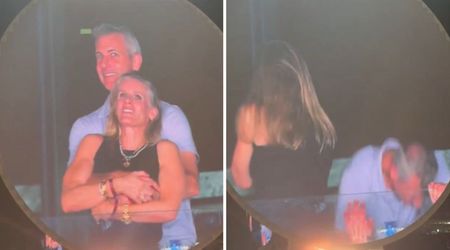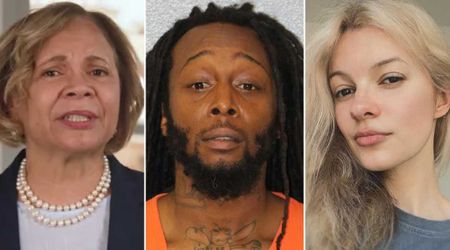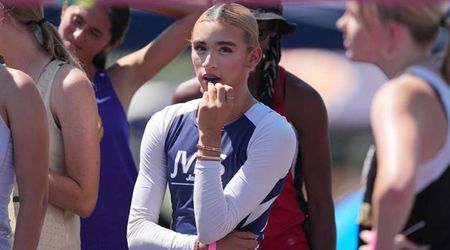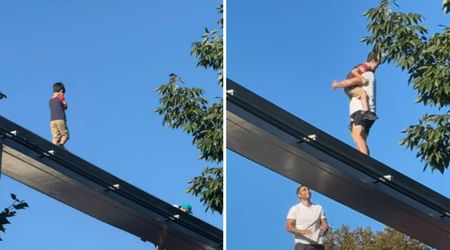Brave pilots fought to save doomed jet moments before mid-air collision killed everyone on board

WASHINGTON, DC: The pilots of American Airlines Flight 5342 made a desperate, last-minute maneuver to save the 64 people aboard their doomed aircraft—but tragically, it wasn’t enough.
According to Radar Online, just moments before their plane collided with a Black Hawk helicopter and crashed into the Potomac River, Captain Jonathan Campos and First Officer Samuel Lilley tried to pull the jet’s nose up. It was a split-second attempt to avert disaster, but the impact was unavoidable.
Final moments before collision caught on flight recorder
The National Transportation Safety Board (NTSB) has been combing through the wreckage, and board member Todd Inman shared a chilling revelation over the weekend from the plane’s flight recorder.
"At one point very close to the impact, there was a slight change in pitch, an increase in pitch," Inman said during a press conference, confirming the pilots’ last-ditch effort.
According to preliminary data, the passenger plane was flying at approximately 325 feet at the time of the crash—far above the maximum allowed altitude of 200 feet for helicopters in that airspace. But there’s a mystery: the control tower recorded the Black Hawk at just 200 feet.
No one can account for the difference as yet, but one thing is certain—both aircraft were in the same airspace at the same time.
"Obviously, an impact occurred, and I would say when an impact occurs, that is typically where the altitude of both aircraft were at the moment," Inman explained.
Conspiracy theories swirl
The horrifying mid-air crash happened on January 29 near Reagan Washington National Airport, sending both aircraft plummeting into the Potomac River.
Everyone on board—64 passengers and crew members on the American Airlines flight, plus three people aboard the Black Hawk—died in the disaster. It’s the first major commercial airline crash in the US since 2009 when 50 people were killed in a crash near Buffalo, New York.
But as always, the internet has its own theories about what really happened. Some believe the collision was intentional, questioning how a military helicopter ended up on a direct collision course with a commercial flight.
Others claim the Black Hawk was “chasing” the passenger plane, likening it to a “1970s-style assassination.”
And then there’s American Airlines CEO Robert Isom, who straight-up blamed the helicopter pilot. “We don’t know why the military aircraft came into the path of the PSA aircraft," he said.
Donald Trump blames diversity initiatives, Barack Obama, and Joe Biden
President Donald Trump wasted no time in blaming diversity programs and past administrations for the crash, using a White House press briefing to go on the attack.
"I put safety first, Obama, Biden, and the Democrats put policy first, and they put politics at a level that nobody's ever seen," Trump declared, pinning the blame on aviation diversity efforts from the Obama era.
According to Trump, the FAA had been pressured to diversify its workforce and this led to hiring unqualified personnel.
"I had to say that it's terrible," he continued, claiming there was a group in the FAA that "determined that the [FAA] workforce was too White, that they had concerted efforts to get the administration to change that and to change it immediately. This was in the Obama administration, just prior to my getting there, and we took care of African Americans, Hispanic Americans."
Of course, this wasn’t just talk—Trump immediately signed two executive orders in response. Firstly, he appointed Christopher Rocheleau as the acting commissioner of the FAA. Secondly, he immediately rolled back Biden-era diversity, equity, and inclusion (DEI) policies, which the President called “damaging.”
"We want the most competent people. We don’t care what race they are," Trump declared. "If they don’t have a great brain, a great power of the brain, they’re not going to be very good at what they do, and bad things will happen," he added.
Veteran hero pilot Captain Chesley Sullenberger weighs in
Captain Chesley ‘Sully’ Sullenberger—a legendary pilot who safely landed a US Airways plane in the Hudson River in 2009—offered a more practical theory.
According to Sully, the lack of lights over the river may have made visibility extremely difficult for both pilots. "There would have been fewer ground lights visible over the water than over land at night," he told The New York Times. "This might have made it a little bit harder to see," he said.
Sullenberger also pointed out how nighttime conditions make mid-air navigation way more challenging.
"Nighttime always makes things different about seeing other aircraft," he explained. "Basically, all you can do is see the lights on them. You have to try to figure out: Are they above you or below you? Or how far away? Or which direction are they headed? Everything is harder at night," he added.

